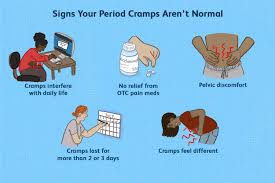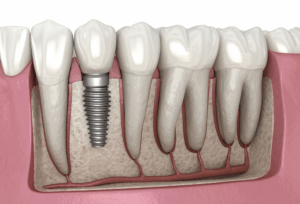Menstrual pain, often dismissed as just another part of the monthly cycle, can be physically debilitating for many women. Severe cramps, lower back pain, pelvic discomfort, and radiating leg pain often interfere with daily life. For those who seek long-term relief beyond conventional approaches, Aspadol 100 mg tablet, a formulation of Tapentadol, offers a promising alternative. Marketed under the brand name Nucynta, this medication actively targets moderate to severe pain, including the intense discomfort many women feel during their periods.
Understanding Menstrual Pain and Its Impact
Period pain, medically referred to as dysmenorrhea, stems from the uterus contracting to shed its lining. These contractions are driven by high levels of prostaglandins, hormone-like substances that trigger inflammation and pain. While mild discomfort is common, some women experience such severe symptoms that they miss school, work, or social activities.
What is Aspadol 100 mg tablet, and How Does It Work?
Aspadol 100 mg contains Tapentadol, a centrally acting analgesic that works through a dual mechanism. It binds to the mu-opioid receptors in the brain and inhibits the reuptake of norepinephrine, altering how your body perceives pain. This dual action makes it effective for managing both nociceptive and neuropathic pain components.
-
Blocks pain signals – By binding to opioid receptors, it reduces the perception of pain.
-
Enhances natural pain control – By increasing norepinephrine levels, it helps the body manage pain more effectively.
Why Choose Tapentadol (Nucynta) for Period Pain Relief?
Tapentadol offers unique advantages when compared to general pain management strategies:
-
Fast-Acting Relief: Aspadol 100 mg tablet starts working within 30–60 minutes of ingestion.
-
Lasting Pain Control: Its effects typically last for 4–6 hours, making it suitable for continuous menstrual pain.
-
Reduced Gastrointestinal Distress: Tapentadol is often better tolerated in the stomach compared to some pain medications.
-
Neuropathic Pain Targeting: If period pain extends to the lower back, thighs, or radiates as nerve pain, Tapentadol addresses this more directly.
How Tapentadol Works for Menstrual Cramps
During menstruation, the uterus contracts more frequently and with greater intensity. These contractions can cut off oxygen to surrounding tissues, causing pain. Tapentadol (Nucynta) helps interrupt the pain signals sent to the brain by:
-
Activating mu-opioid receptors dulls the pain sensation.
-
Increasing norepinephrine levels to suppress pain pathways.
-
Reducing emotional distress linked to chronic pelvic pain.
Is Aspadol 100 mg Safe for Managing Period Pain?
Yes, Aspadol 100 mg tablet is considered safe for most women when taken as prescribed by a medical professional. However, safety depends on several factors:
1. Proper Dosage
Women should take Aspadol 100 mg only under medical supervision. Overuse or misuse can lead to dependence or side effects.
2. No Concurrent Medical Conditions
Those with liver or kidney impairments, respiratory issues, or a history of substance use should discuss these conditions with a doctor before starting Tapentadol.
3. Short-Term Use
Tapentadol works best when used for a few days during the peak of menstrual pain. Prolonged or chronic use increases the risk of tolerance.
4. Avoiding Alcohol
Combining Tapentadol with alcohol can intensify drowsiness and suppress breathing. Avoid alcohol during use.
5. Pregnancy and Breastfeeding
Consult a healthcare provider before using Tapentadol during pregnancy or while nursing. The medication can cross the placenta and may be present in breast milk.
Effectiveness of Aspadol 100 mg for Menstrual Pain: Real-Life Results
Clinical and anecdotal reports suggest that many women find Tapentadol effective for treating menstrual pain. Women report relief from:
-
Intense abdominal cramping
-
Lower back and pelvic pain
-
Radiating leg discomfort
-
Sleep disturbances linked to pain
How to Use Aspadol 100 mg During Your Period
If your doctor prescribes Aspadol 100 mg for period pain, follow these guidelines:
-
Take One Tablet Every 6–8 Hours as needed. Don’t exceed three tablets in 24 hours unless advised otherwise.
-
Take With or Without Food. Food may delay the onset slightly, but can help with nausea.
-
Hydrate Well: Drink plenty of fluids to aid metabolism and reduce side effects.
-
Track Your Cycle, Anticipate the days of intense cramping, and plan Tapentadol use accordingly.
-
Do Not Mix with Other CNS Depressants. Avoid combining with sleep aids or alcohol.
Potential Side Effects of Tapentadol (Aspadol 100 mg)
While most women tolerate Aspadol well, side effects may occur:
-
Nausea or vomiting
-
Drowsiness or dizziness
-
Constipation
-
Dry mouth
-
Fatigue or weakness
Who Should Avoid Using Aspadol 100 mg tablet for Period Pain?
Not everyone is an ideal candidate for Tapentadol. You should avoid using Aspadol if you:
-
Are pregnant without physician clearance
-
Have a history of respiratory depression
-
Are allergic to Tapentadol or any tablet ingredients
-
Take MAO inhibitors or certain antidepressants
-
Have unmanaged epilepsy
Always consult a healthcare provider before initiating Tapentadol for menstrual issues, especially if you are on other medications.
Managing Expectations: What Aspadol Can and Cannot Do
Aspadol 100 mg provides potent relief from period-related discomfort, but it is not a cure for underlying conditions like endometriosis or PCOS. It will not regulate menstrual cycles or reduce heavy bleeding. However, it will significantly reduce the pain and make periods more manageable.
Tapentadol (Nucynta) serves as a supportive treatment option during your menstrual cycle, helping restore normal functioning, sleep, and focus.
Aspadol 100 mg tablets, also known as Tapaday 100 mg, are generally considered safe and effective for managing period pain. This medication contains tapentadol, which works as a pain reliever by affecting the way your brain perceives pain signals. It is crucial to follow your doctor’s dosage instructions to ensure its effectiveness and minimize any potential side effects.
Alternatives to Tapentadol Use
If 100 mg feels too strong, some doctors may recommend lower dosages to begin with. The treatment can then be adjusted based on pain levels and tolerance.
Women with chronic pelvic pain throughout the month may also explore extended-release Tapentadol formulations under medical guidance. However, for typical period pain lasting 2–3 days, Aspadol 100 mg in short courses is often sufficient.
Can Aspadol Be Used Monthly Without Risks?
Using Aspadol 100 mg once a month for 2–3 days is generally safe when guided by a healthcare professional. The risk of dependency remains low with periodic use, especially if:
-
You take it only when pain interferes with function.
-
You avoid using it preemptively every cycle.
-
You communicate with your provider about dosage changes.
Short-term, cyclical use creates a favorable balance between effectiveness and safety.
Who Should Avoid Aspadol 100 mg?
-
Pregnant or breastfeeding women
-
Patients with severe respiratory issues
-
Those with a history of substance abuse
-
People taking MAO inhibitors or SSRIs
Proper Dosage and Usage for Period Pain
-
Standard dose: 50-100 mg every 4-6 hours as needed.
-
Maximum daily limit: 600 mg (under strict medical supervision).
-
Administration: Take with or without food, but avoid alcohol.
Precautions When Using Aspadol
-
Do not crush or chew – Can lead to rapid release and overdose.
-
Avoid driving – May cause dizziness.
-
Follow doctor’s instructions strictly – Prevents misuse.
Alternatives to Aspadol for Period Pain
If Tapentadol is not suitable, consider:
-
Heat therapy (heating pads)
-
Light exercise (yoga, walking)
-
Dietary changes (anti-inflammatory foods)
Final Verdict: Is Aspadol 100 mg a Reliable Option for Period Pain?
Yes, Aspadol 100 mg, containing Tapentadol and known under the brand name Nucynta, is a reliable and effective option for treating moderate to severe period pain. It acts quickly, targets both physical and nerve-related pain, and helps women reclaim comfort during their cycle. When used under medical supervision, it provides a much-needed solution for those suffering in silence.






